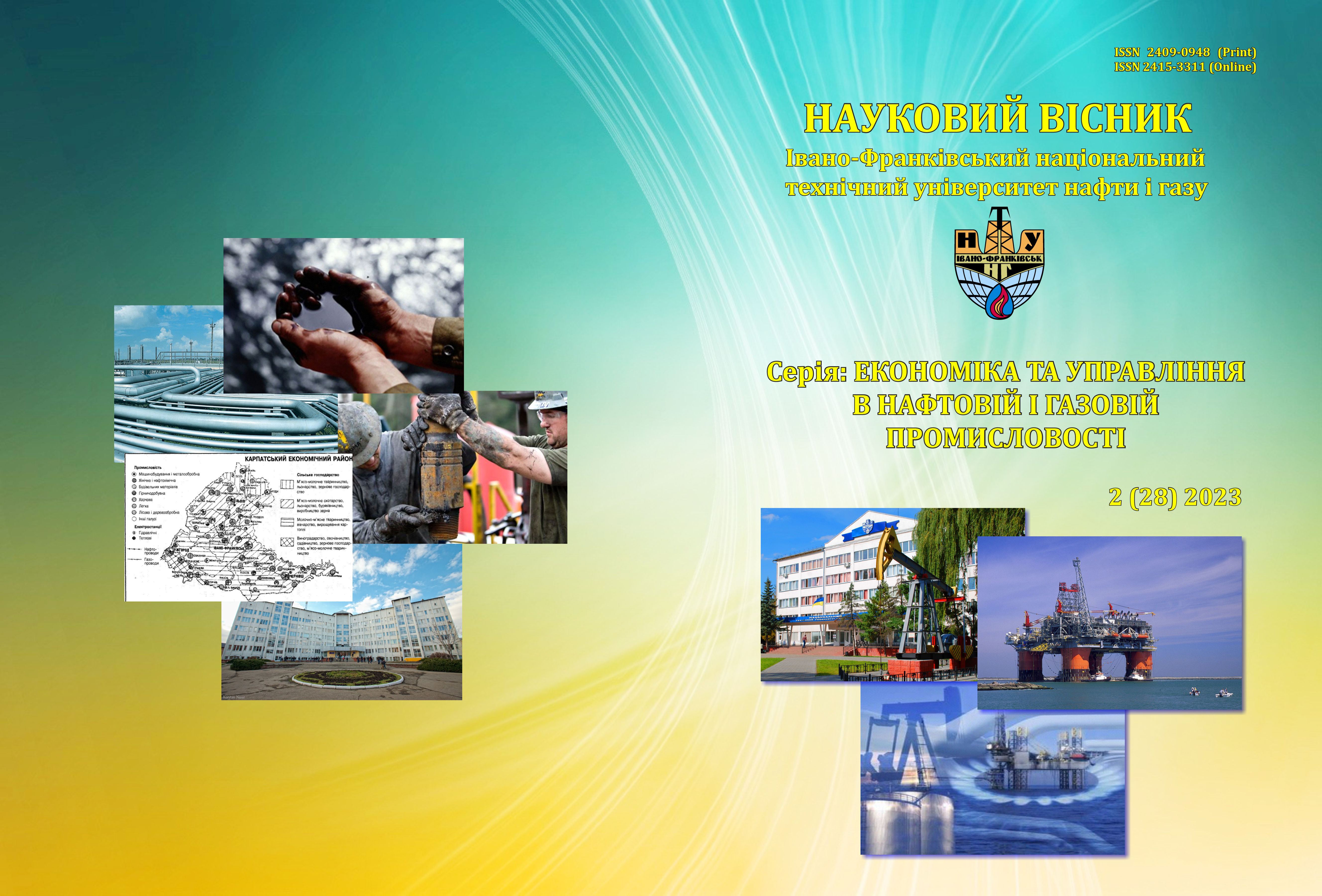PARTNER SELECTION MODEL IN LOW-CARBON TRANSITION START-UP PROJECTS
DOI:
https://doi.org/10.31471/2409-0948-2023-2(28)-7-17Keywords:
model, startup project, innovation, low-carbon transition, partner, algorithm.Abstract
The article examines theoretical and methodological approaches to building a model of partner selection and interaction in startup projects of the low-carbon transition. Theoretical approaches to the implementation of start-up projects on mutually beneficial terms have been studied. Emphasis is placed on attracting and using the assets of partners (state, business, civil society) - participants in the low-carbon transition start-up.
The approaches and methodology for analyzing the effectiveness of partner selection using the grapho-analytical express method, which provides for the synergy of their resources, have been defined. It is graphically and analytically demonstrated that different parts of the partners' assets can be involved in the area of joint activity. Due to the realization of the effect of synergy of assets, each partner has the opportunity to perform their tasks more efficiently, and thereby contribute to the successful implementation of the startup project. The geometric model of the involvement of partners' assets in the form of a Venn diagram is used to demonstrate the possibilities of establishing the quantitative value of partners' assets that can be involved in the implementation of a startup project
The dependence of the distance between the centers of the circles on the Venn diagram on the amount of partners' assets in the area of joint activity was analytically determined and graphically demonstrated. An equation is proposed that makes it possible to determine the distance between the centers of the circles on the Venn diagram for selecting partners, based on the needs and possibilities of attracting their assets.
The possibility of using a graph-analytical model for quantitative assessment of the effectiveness of partners' assets in the performance of startup project tasks is proven, which enables a pairwise comparison of various options based on the results of asset synergy to select the most effective partners.
References
Геєць В. М. (2022). Економіка України в імперативах низьковуглецевого розвитку: Доповідь на науковій сесії Загальних зборів НАН України 17 лютого 2022 року. Вісник НАН України. 3. 8-17. https://doi.org/10.15407/visn2022.03.008.
Скільки втратить ваш бізнес через зміни клімату. URL: https://biz.nv.ua/ukr/experts/pochemu-zakryvayutsya-birzhi-altkoinov-50048836.html
Сментина Н. В. (2013). Партнерство влади, бізнесу та громади як складова успішності місцевого соціально-економічного розвитку. Вісник Хмельницького національного університету. Економічні науки. 2 (3). 259-262.
Карпова Т. С. (2017). Соціальне партнерство як основа взаємовигідного співробітництва бізнесу та держави. Modern Economics. 3. 69-77.
Слюсаренко В. Є. (2016). Моделі тристороннього партнерства держави, бізнесу та громадянського суспільства. Економіка та управління підприємствами, 1 (117), 97-100.
Безвух С. В., Стопчак А. Ю. (2015). Соціальне партнерство науки і бізнесу: форми взаємодії, проблеми і рекомендації щодо їх вирішення. Вісник Хмельницького національного університету. Економічні науки. 3 (3). 7-14.
Куваєва Т. В. (2020). Критеріальна модель оцінювання результативності партнерських відносин промислового підприємства. Економічний вісник Національного гірничого університету. 1. 177–186. https://doi.org/10.33271/ev/69.177.
UK Research and Innovation. Innovate UK. URL: https://www.ukri.org/councils/innovate-uk/
MassChallenge Mexico. URL: https://masschallenge.org/programs-mexico/
Start-Up Chile. URL: https://startupchile.org/
Smart Dubai. URL: https://mediaoffice.ae/en/future/smart-dubai
Venn J. (1880). On the Diagrammatic and Mechanical Representation of Propositions and Reasonings. Philosophical Magazine and Journal of Science. 5. 10 (59).
Downloads
Published
How to Cite
Issue
Section
License
Copyright and Licensing Terms
Copyright Statement
The authors who publish in the journal accept the following conditions:
- The authors retain the copyright and grant the journal the right of first publication, licensed with Creative CommonsCC BY-NC-SA , which permits other people to remix, transform, and build upon the material and use the material for non-commercial purposes, give appropriate credit and distribute the contributions under the same license as the original.
- The authors can conclude additional agreements on the non-exclusive distribution of the journal’s published version of the work (for example, publication of the work in electronic repositories) with an acknowledgment of its initial publication in this journal.
- The authors can upload the published articles on the Internet (for example, in electronic repositories or on web-sites), as it will stimulate fruitful scholarly discussions and increase the citation rates of the published articles.


1.png)


1.png)





